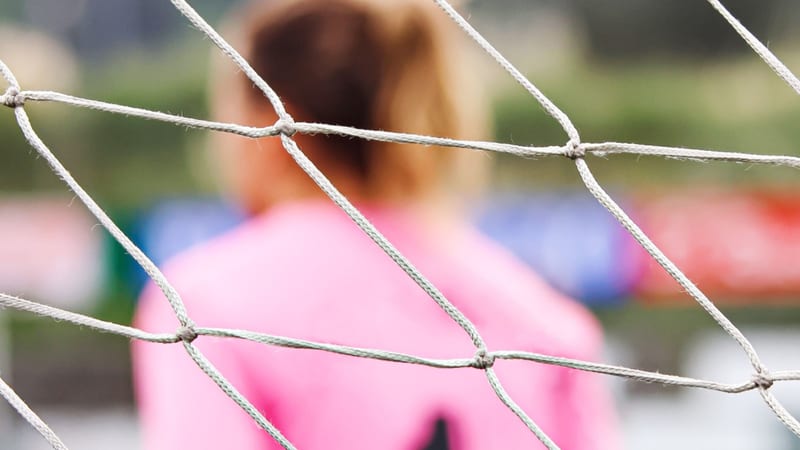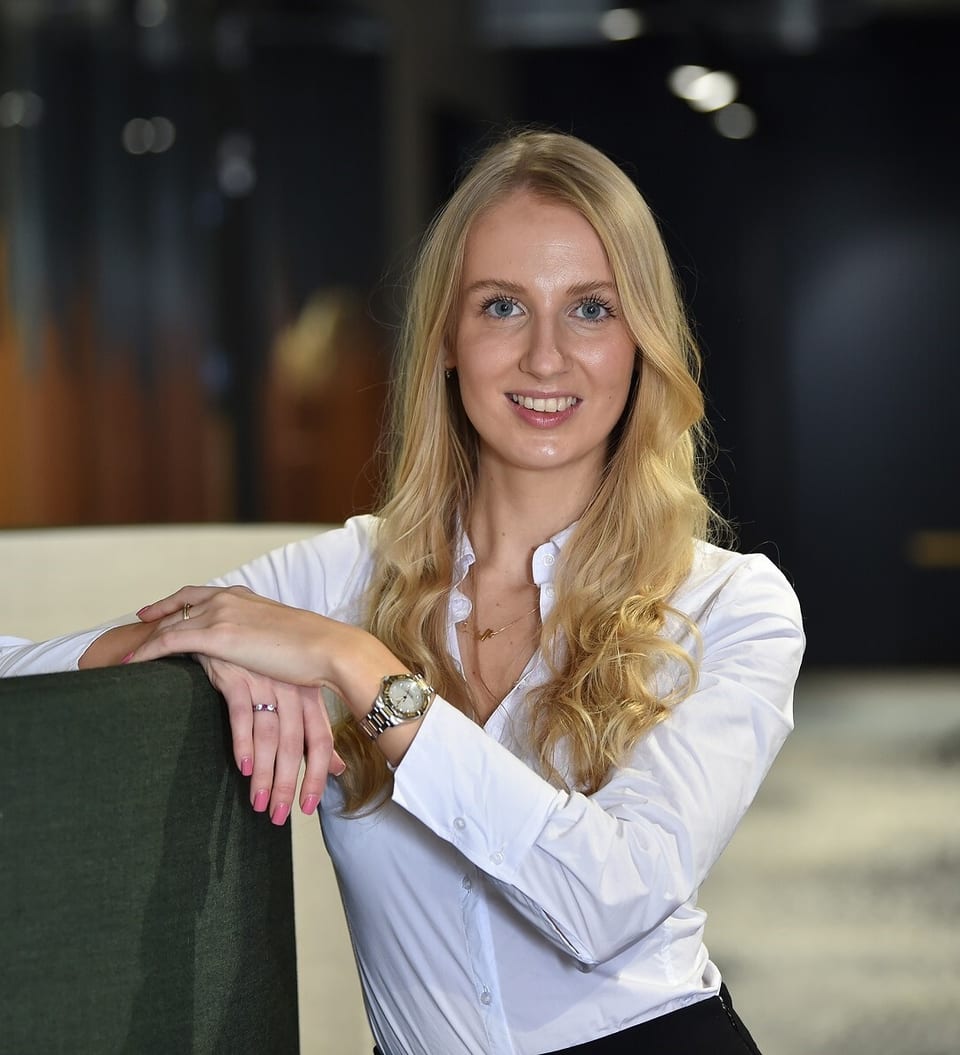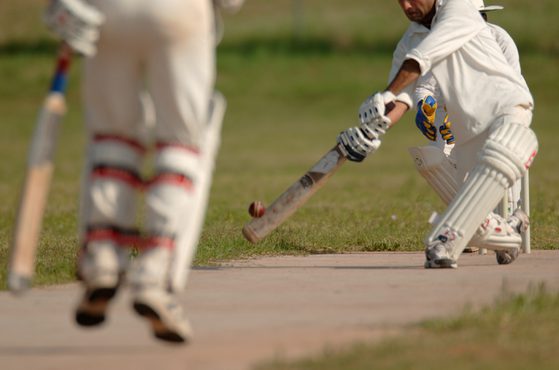This article was originally published on 29 January 2024 and updated on 6 May 2025.
ACL (anterior cruciate ligament) injuries are one of the most common and serious in football. It’s estimated that there have been over 500 ACL injuries among elite footballers since 2022. Concerningly, female players are up to six times more at risk than males, with almost 30 missing the FIFA Women’s World Cup 2023 due to ACL injuries.
From the design of football boots and hormonal fluctuations to disparities in training facilities, here Allana Edwards and Eleanor Green investigate the potential factors behind the prominence of female ACL injuries and ask — can anything be done to halt this epidemic?
Why are ACL injuries more common in female players?
ACL tears most commonly occur as a result of changing pace or direction or due to repetitive landing and pivoting manoeuvres, rather than contact between two players.
Various studies have been conducted to look into why females are more prone to non-contact ACL injuries, including consultant orthopaedic surgeon Nev Davies’ study, which showed that female players are four-to-six times more at risk of sustaining non-contact ACL injuries than males. Female players are also 25% less likely to make a full recovery and return to the pitch than their male counterparts.
Yet following these findings, we haven’t seen a decrease in the prevalence of ACL injuries in women.
Let’s dig into some potential factors.
Training and recovery facilities
It’s commonly thought that the genetic makeup of the female body plays a key role in injury risk, with females having wider pelvises and completely different biomechanics and hormones.
However, female health specialist Dr Emma Ross — a prominent speaker on this topic — believes there is “no good evidence” for the roles of “body shape, hip width and the menstrual cycle” as contributing factors to injuries, despite being used as arbitrary excuses for why “women aren't designed to play football.”
Fox et al. (2020) also suggested that confining this to biological causes misrepresents the root causes of ACL injuries, which are likely to be strongly influenced by “gendered environmental disparities” — essentially, different experiences in sport and less access to training facilities.
According to Dr Joanne L Parsons’ paper ‘Anterior cruciate ligament injury: towards a gendered environmental approach’, we need to look at gendered discrepancies in pre-sport activities, training, competition, research and rehabilitation environments.
Women already face plenty of barriers to participation in sport. They don’t need the added challenge of unnecessary injuries holding them back. So far, not enough has been done to tackle this issue by those who have the power and influence to make a difference.
Nearly 30 female footballers — enough players for an entire squad — missed the 2023 FIFA Women’s World Cup due to ACL injuries and at least 13 WSL (Women’s Super League) players are currently undergoing ACL rehabilitation including England captain Leah Williamson.
This has forced prominent players to speak out, including Beth Mead and Vivianne Miedema in their Netflix documentary ‘Step By Step’. This saw Arsenal players talk about their personal experiences of suffering from ACL injuries in the hope of helping the next generation of female footballers.
We spoke with former Canadian international and Champions League player Kylla Sjoman, who shared:
“It has taken so long for attention to be brought to the indisputable cases of ACL injuries in female athletes. My career was cut short due to an ACL injury which I know could have been prevented or at least rehabilitated if I had been afforded access to the appropriate facilities, resources and coaches”.
Football boots
While the majority of WSL players now have boot deals, there are still a number of professional players who don’t. For them, choosing a new pair of boots means browsing the shelves in a high street store.
Until recently, the vast majority of football boots have been designed specifically for men. Given that women’s feet have completely different bone structures to those of their male counterparts, it comes as no surprise that up to 82% of female players in Europe experience discomfort when wearing football boots.
Could boots be the Achilles heel to ACL injuries in females? Dr Emma Ross explores the impact that football boots have on ACL injuries in her book 'The Female Body Bible':
“You make studs and you make the sole to withstand the capacity of the average man and then you put an average women in them and as fast and as quick as they are, they're not as strong or as powerful as men. So those boots are now designed to grip a heavy, strong man into the ground but you've got a lighter woman in them and they're getting anchored to the ground by them”.
Some brands have finally got the message and started to design football boots for women. Nike is leading the way with the Phantom Luna Elite, claiming that this is the most innovative and evidence-driven female boot design to date. The boot has three key aims: eliminate preventable pain points, improve on-pitch performance and reduce the risk of major injuries.
While there is currently no evidence to suggest that the level of support provided by these boots will make a difference when mitigating ACL injuries, new models can certainly measure ACL loads at different points in time.
Scheduling and fixtures
Others point to the explosion in the popularity of women’s football and the consequential growth in the fixture schedule as the cause of so many ACL injuries by increasing the demands on players’ bodies.
The gruelling run of major tournaments in recent years has included a pandemic-delayed Olympics in 2021, a European Championship shifted back by 12 months for the same reason in 2022, the Women’s World Cup in 2023 and the Paris Olympics in 2024 — all on top of the WSL and Champions League fixtures. It seems that players aren’t going to be able to rest any time soon with the 2025 European Championships kicking off in July 2025.
With the likes of Sam Kerr racking up an astonishing 3,411 minutes of action during the 22/23 season across all competitions, it’s unsurprising that players are suffering injuries.
Terms of employment
Injuries like ACL tears can be career ending — and access to the best facilities and care is essential for players to make a return to the physical demands of football at the highest levels.
With ACL injuries usually resulting in at least nine months off the pitch, players have often been prevented from accessing the state-of-the-art medical treatment and rehabilitation services provided by clubs due to their terms of employment.
Female footballers have historically been employed by clubs on far less favourable contractual terms than their male counterparts. Many of the first WSL contracts contained a clause that allowed clubs to terminate players’ employment if they were unable to train or play games for over three months.
Below is an extract taken from a 2018 standard form contract:
“TERMINATION FOR LONG TERM INJURY
38 If a Player is unable through injury or illness to train or play for the Club for a consecutive period of 3 months in the written opinion of an appropriately qualified medical consultant instructed by the Club (the "Medical Consultant"), the Player shall be deemed to have suffered a "Long Term Injury". Each provision set out below shall apply unless the parties agree a more beneficial provision in substitution for the original provision.
39 Where a Player is deemed to have suffered a Long Term Injury, the Club shall be entitled to terminate this Contract by giving 3 months written notice to the Player (the "Notice Period"). The Club may serve notice at any time after the date on which the Player is declared to be suffering a Long Term Injury by the Medical Consultant.”
Thankfully, this has recently changed. The FA and PFA have agreed new benefits pertaining to injury, illness and long-term sickness which came into effect from the start of the 2022 season to mirror those in the men’s game.
Significantly, the period relating to contract termination has increased from three to 12 months. There are also new uplifts to maternity leave and pay.
Pitch quality
WSL teams are often allocated artificial pitches or academy pitches to both train and play fixtures on. This has been identified as an area of concern for many, including by Braun, Waterlain and Dragoo (2013), who suggest that friction increases when playing on synthetic surfaces, resulting in an increased rate of injury for the lower extremities (like legs, knees, ankles and feet).
In 2019, FIFA announced that both women’s and men’s football are to be played using the same surfaces and field parameters. Natural grass fields were a requirement for the first time at the 2023 Women’s World Cup.
Nevertheless, there is still a disparity between the facilities accessible by men and women. In January 2023, we were still seeing WSL games being called off due to frozen pitches — a problem that is almost non-existent in the Premier League given that it’s compulsory for clubs to have undersoil heating.
Manchester United and Manchester City have recognised this void in facilities and committed significant funds to combat the disparity. Manchester United Women recently moved into a new £7m training facility while Manchester City Women have submitted plans for a £10m purpose-built training facility.
The Government has also recently announced a £30m investment to build approximately 30 new state-of-the-art pitches and accompanying facilities, designed to prioritise women’s teams across England.
Hormonal fluctuations
Hormonal fluctuations during the menstrual cycle have been identified as another potential factor contributing to the high incidence of ACL injuries in women’s football.
Existing research suggests that variations in oestrogen and progesterone levels can potentially increase the risk of injury. In particular, oestrogen — which peaks during the ovulatory phase — has been associated with increased ligament laxity, making the ACL more susceptible to tears. Further, progesterone — which rises during the luteal phase — can impact neuromuscular response times, potentially leading to compromised joint stability. These hormonal changes may therefore influence the biomechanics of movements such as landing from jumps or sudden directional changes — common scenarios for ACL injuries
In May 2024, research from University College London, University of Bath and St Mary's University suggested that players are more likely to get injured at certain points during their menstrual cycle. The peer-reviewed study found that 26 of the players monitored were six times more likely to pick up a muscle injury in the days leading up to their period, compared to when they were on their period.
It seems that football’s governing bodies are also taking notice of the potential link between hormonal fluctuations and ACL injuries, with FIFA recently announcing its plans to fund a groundbreaking year-long study at Kingston University London. This will involve tracking hormone levels in blood samples from both elite and grassroots players throughout their menstrual cycles. The study aims correlate these hormonal phases with physical performance data and typical ACL injury scenarios, such as rapid directional changes and landing after heading the ball.
Simon Augustus, a senior lecturer in sport biomechanics at Kingston University, commented on the potential impact that this research could have to women’s football: "We know some injuries are unavoidable, but we're attempting to help those individuals who injure their ACL outside of impact actions. Those are the ones where we might have more chance to intervene and prevent them from taking place by utilising strength training or tweaking technique”.
Who has a duty of care?
The players have spoken and medical experts are clear — football is depriving female players of fair and equal treatment. Our infrastructure — originally designed and built to support men — is failing the women's game. This problem has been exacerbated by the accelerated growth of women's football.
Sports medicine specialist and former Chelsea club doctor Eva Carneiro is one of few females to have held a senior medical position at a Premier League club. She believes that the lack of funding and gaps in female-specific research and knowledge is negatively impacting female athletes.
She told Sky Sports: “Gender is still an issue in football. You've got limited funding in the women's game and you don't have very experienced medical teams.”
Clubs and governing bodies owe a duty of care to all their athletes. At the very least, this includes employing physiotherapists and medical professionals with specific training and experience with the female anatomy. However, the talent pool for such professionals is limited, with coaches and physiotherapists working predominantly with men. This must change to ensure that our female players receive adequate care and support. From a legal perspective, female footballers are employees and have the right to receive the same standard of care as males.
What is being done to halt the ACL epidemic?
Training programmes
FIFA has already developed training programmes (such as the 11+) that are designed to prevent ACL injuries and have been implemented by clubs and national teams around the world. Yet there’s still a drastic need for female-specific programmes to be developed.
UEFA Expert Panel
In December 2023, UEFA made an announcement that could well be considered a watershed moment for women’s football — the introduction of an expert panel dedicated exclusively to understanding and improving the health and wellbeing of female athletes.
The central focus of this panel is to gain a deeper understanding of ACL injuries among female players.
It has been reported that the long-term aim is to publish a UEFA consensus on ACL injury prevention and management, plus an up-to-date ACL injury prevention programme. This research is currently ongoing.
However, the panel recently launched ‘Unstoppable’ — a new six-year strategy which, according to UEFA president Aleksander Čeferin, is UEFA’s “road map to lay the groundwork for a sustainable future, unlocking the full potential of women’s football.”
As part of this strategy, UEFA has shown its commitment to addressing challenges such as those posed by a women’s menstrual cycle by funding research into the impact of menstruation in football and setting up workshops to increase awareness of the menstrual cycle and its impact on players.
Research
Grace Vella — Founder and CEO of Miss Kick — told us that “the most important thing that needs to be done right now is the research. In the past, sport science and its findings has predominantly been based around the male anatomy and physiology.
It's only more recently, as the women's game has grown, that we have started to consider whether women and girls need specific equipment.
Ultimately, the goal should be to ensure the player on the pitch is as comfortable as possible and to minimise her risk of injury. It'll be interesting to see what findings come out of the data over the coming years…”
In light of this, FIFA’s commitment to funding pioneering research into how hormonal fluctuations could lead to an increase in ACL injuries marks a huge step forward for women’s football and (most importantly) the wellbeing of players. In particular, the findings that are obtained from this study could lead to groundbreaking tailored training programs and interventions that’ll act to reduce injury risks based on individual hormonal profiles. This would be particularly helpful at non-elite levels, where clubs often operate without the financial resources of top-level clubs.
Other well-known organisations within the football world are coming together with the aim to accelerating research into reducing ACL injuries in women’s football. FIFPRO, the Professional Footballers Association and Leeds Beckett University, for example, have joined forces to conduct an advanced research initiative which focuses on increasing player availability and developing strategies to mitigate the risk of ACL injuries.
New treatment plans and technologies
Recent breakthroughs in treatment plans and technologies also provide promising and innovative solutions for both preventing and managing ACL injuries in women's football.
One notable innovation is the Bridge-Enhanced ACL Restoration (BEAR) procedure. Unlike traditional ACL reconstruction, which involves grafting tissue from another part of the body, the BEAR procedure uses a collagen implant combined with the patient's own blood to promote natural healing of the torn ligament. This approach preserves the native ACL's nerve and blood vessel structures, potentially leading to better functional outcomes once healed and reduced recovery times.
Another significant development is the use of 3D wearable sensor technology such as ViPerform AMI. This enables real-time monitoring of athletes' movements, providing detailed data on functional deficiencies that may predispose them to ACL injuries. By integrating this data into training programs, coaches and medical staff can design personalised interventions for each player in order to improve strength, coordination, balance and flexibility, thereby reducing the risk of injury.
Virtual reality technology and robot-assisted rehabilitation have also enhanced the precision and effectiveness of rehabilitation exercises. These technologies make rehabilitation more engaging for patients, improving adherence to protocols and ultimately leading to better recovery outcome.
These advancements in treatment and prevention strategies represent a significant step forward in addressing the prevalence of ACL injuries in women's football, offering hope for safer and more effective management of this all too prevalent issue.
Hopefully, 2025 will be a year of further positive change for women’s football as we continue to see strides forward in parity with the men’s game.
Talk to us
We work closely with elite sports clubs, national governing bodies, international federations and large sports agencies both throughout the UK and around the world.
If you need advice on the above or want to talk about how the changing landscape of women’s football could affect your club or playing career, our specialist sports sector team is here to help.





